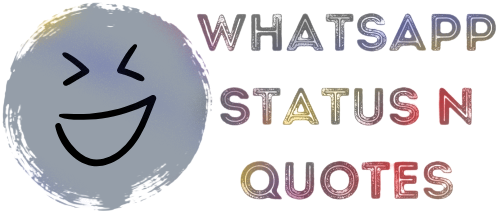Hiroshima is a city that is known for one of the most tragic events in human history: the atomic bombing of August 6, 1945, that killed tens of thousands of people and devastated the city. But Hiroshima is also a city that has risen from the ashes and rebuilt itself as a symbol of peace and hope. In this blog post, we will explore what Hiroshima looks like today, how it has overcome the effects of the bombing, and what it teaches us about the dangers of nuclear weapons.
.png) |
| Hiroshima Today |
Is Hiroshima still radioactive?
One of the most common questions that people have about Hiroshima is whether it is still radioactive or not. The answer is no. The radiation from the bomb dissipated within a few days after the explosion, and the residual radiation from the fallout was mostly washed away by rain. The radiation levels in Hiroshima today are similar to those in any other city in the world.
 |
| Hiroshima Today |
However, this does not mean that the effects of radiation have disappeared completely. Many survivors of the bombing, known as hibakusha, have suffered from various health problems, such as cancers, leukemia, thyroid disorders, cataracts, and genetic mutations. According to the Radiation Effects Research Foundation, which has been studying the health of hibakusha since 1947, more than 60% of their deaths were related to radiation exposure. The foundation estimates that there are still about 136,000 hibakusha alive today, and they receive medical care and financial support from the Japanese government.
What are Hiroshima shadows?
Another haunting legacy of the bombing is the Hiroshima shadows. These are the silhouettes of objects or people that were burned into walls, floors, or other surfaces by the intense heat and light of the blast. The shadows were created by the difference in thermal radiation absorption between the exposed and shaded areas. Some examples of Hiroshima shadows are a ladder on a wall, a bicycle on a bridge, or a person sitting on a bench.
The Hiroshima shadows are rare and fragile relics that bear witness to the horror of that day. Many of them have been preserved by the city or by private collectors, while others have faded or been destroyed over time. Some of them are displayed at the Hiroshima Peace Memorial Museum, which also houses other artifacts and testimonies from the bombing.
When did Hiroshima happen?
The atomic bombing of Hiroshima happened on August 6, 1945, at 8:15 a.m. local time. It was the first time that a nuclear weapon was used in warfare, and it marked a turning point in World War II. The bomb, nicknamed Little Boy, was dropped by a US B-29 bomber called Enola Gay, piloted by Colonel Paul Tibbets. The bomb exploded about 600 meters above the ground, creating a fireball that reached temperatures of several million degrees Celsius. The blast wave destroyed everything within a radius of about 2 kilometers, and the heat wave ignited fires that spread throughout the city. The bomb released about 15 kilotons of energy, equivalent to 15,000 tons of TNT.
Three days later, on August 9, another US bomber dropped a second atomic bomb, nicknamed Fat Man, on Nagasaki, killing about 40,000 people. On August 15, Emperor Hirohito announced Japan’s surrender, ending World War II.
How many people died in Hiroshima?
The exact number of casualties from the bombing of Hiroshima is hard to determine, as many records were lost or incomplete. However, based on various sources and estimates, it is generally accepted that about 70,000 people died immediately or within hours of the blast, and another 70,000 died by the end of 1945 due to injuries or radiation sickness. The total death toll by 1950 was about 200,000. About 90% of the victims were civilians.
 |
| Hiroshima Today |
How does Hiroshima look like today?
Today, Hiroshima is a vibrant and modern city that has overcome its tragic past and embraced its role as a messenger of peace. The city has a population of over 1.1 million people and is a major industrial and cultural center in Japan. It is known for its production of cars, steel, machinery, textiles, and food products. It is also home to several universities, museums, parks, temples, and festivals.
One of the most remarkable features of Hiroshima today is how it has preserved some of the traces of the bombing while also creating new landmarks that symbolize its recovery and vision. For example, the Atomic Bomb Dome, which was one of the few buildings that survived the blast, has been designated as a UNESCO World Heritage Site and serves as a memorial for the victims and a reminder of the need for nuclear disarmament. The Peace Memorial Park, which was built on the former site of the city’s political and commercial center, contains various monuments, statues, and facilities that honor the dead, support the survivors, and promote peace education. The Peace Memorial Museum, which is located within the park, displays the history and effects of the bombing and its aftermath, as well as the messages and activities of the hibakusha and other peace advocates.
 |
| Hiroshima Today |
What can we learn from Hiroshima?
Hiroshima is a city that teaches us many lessons about war and peace, suffering and healing, destruction and reconstruction, hatred and forgiveness, despair and hope. It shows us the terrible consequences of nuclear weapons and the urgent need to prevent their use and proliferation. It also shows us the remarkable resilience and courage of the hibakusha and their descendants, who have not only survived but also thrived despite their hardships. It also shows us the power of peace and reconciliation, as Hiroshima has established friendly relations with many former enemies, including the United States.
Hiroshima is a city that inspires us to work for a world where nuclear weapons are abolished and where people live in harmony and dignity. It is a city that invites us to join its mission of spreading the message of peace and humanity to future generations. It is a city that challenges us to ask ourselves: What can we do to make this world a better place?
Here are some WhatsApp statuses and quotes on Hiroshima that you can use:
Hiroshima: A city of pain and hope, a city of war and peace, a city of destruction and reconstruction. Never forget, never repeat. 🕊️
The atomic bomb did not discriminate between the innocent and the guilty. It killed them all. Let us learn from Hiroshima and choose life over death. 💔
Hiroshima is not just a place, it is a lesson. A lesson that teaches us the value of peace, the cost of war, and the power of humanity. 🙏
The survivors of Hiroshima are the living witnesses of the nuclear horror. They are also the living messengers of peace. Listen to their stories, heed their warnings, join their mission. 🙌
Hiroshima was the first city to suffer a nuclear attack. Let us make sure it is also the last. No more bombs, no more wars, no more violence. Only peace, only love, only harmony. 💖
The mushroom cloud over Hiroshima was a dark stain on human history. It was also a wake-up call for human conscience. Let us heed the call and work for a world free of nuclear weapons. ☮️
Hiroshima shows us the worst and the best of humanity. The worst that we can do to each other, and the best that we can do for each other. Let us choose the best and reject the worst. 💯
Hiroshima is a city that rose from the ashes and became a symbol of hope. It is a city that inspires us to overcome our challenges and pursue our dreams. It is a city that challenges us to make this world a better place. 🌎
There are many quotes on Hiroshima Day that reflect on the tragedy, the lessons, and the hope for peace that this day inspires. Here are some of them:
“The unleashed power of the atom has changed everything, save our modes of thinking and we thus drift toward unparalleled catastrophe.” - Albert Einstein 1
“A thousand paper cranes. Peace on Earth and in the Heaven.” - Sadako Sasaki 1
“The genius of Einstein leads to Hiroshima.” - Pablo Picasso 1
“Rest in Peace. The mistake shall not be repeated.” - Inscription on the cenotaph at Hiroshima Peace Memorial Park 2
“Hiroshima teaches us that we must strive for a world free of nuclear threats and never repeat the mistakes of the past.” - Daisaku Ikeda 1
“When faced with nuclear weapons, there can only be victims. The solution to this problem lies in the heart of mankind.” - Dalai Lama 1
“We will perish together as fools unless we learn to live together as brothers.” - Martin Luther King Jr3
“The tragedy of Hiroshima teaches us that our most sacred duty is to seek peace.” - Mahatma Gandhi 3
“The world’s most horrific bomb has been discovered by us. Atomic war has no victors, only victims, prophesied in the Euphrates Valley era following Noah and his magnificent Ark.” - Harry S. Truman 3
“Let Hiroshima serve as a constant reminder that humankind must transcend its instincts to devastate.” - Ban Ki-moon 3







.png)



